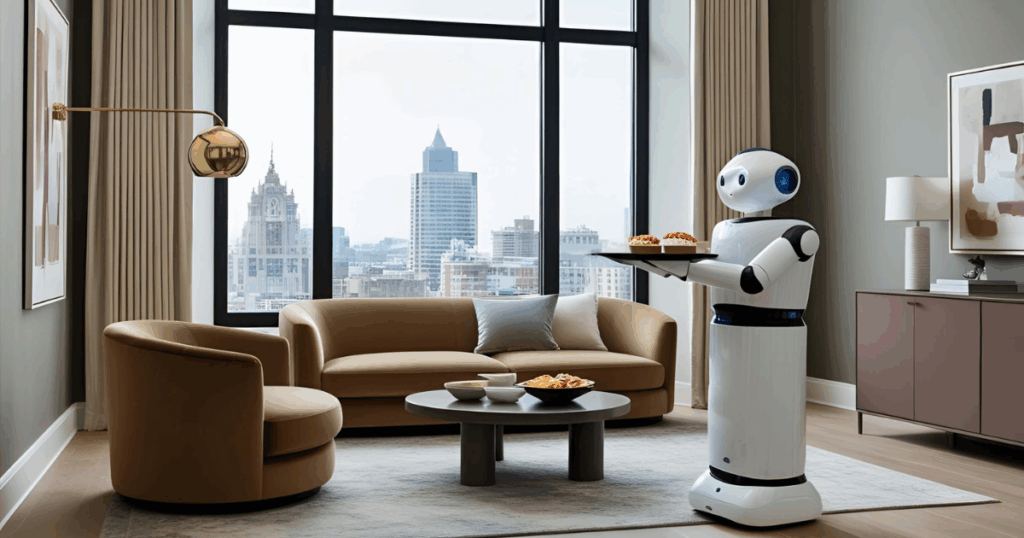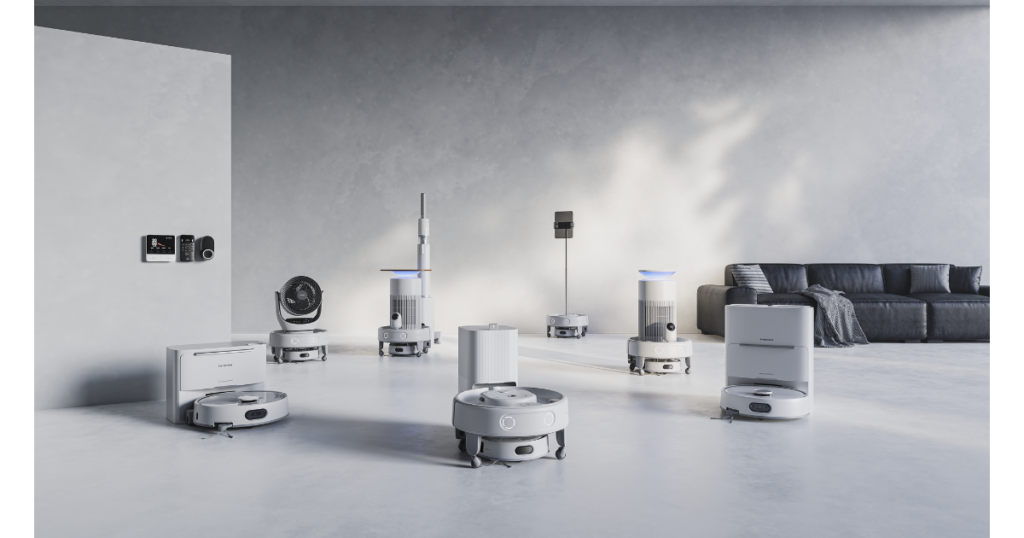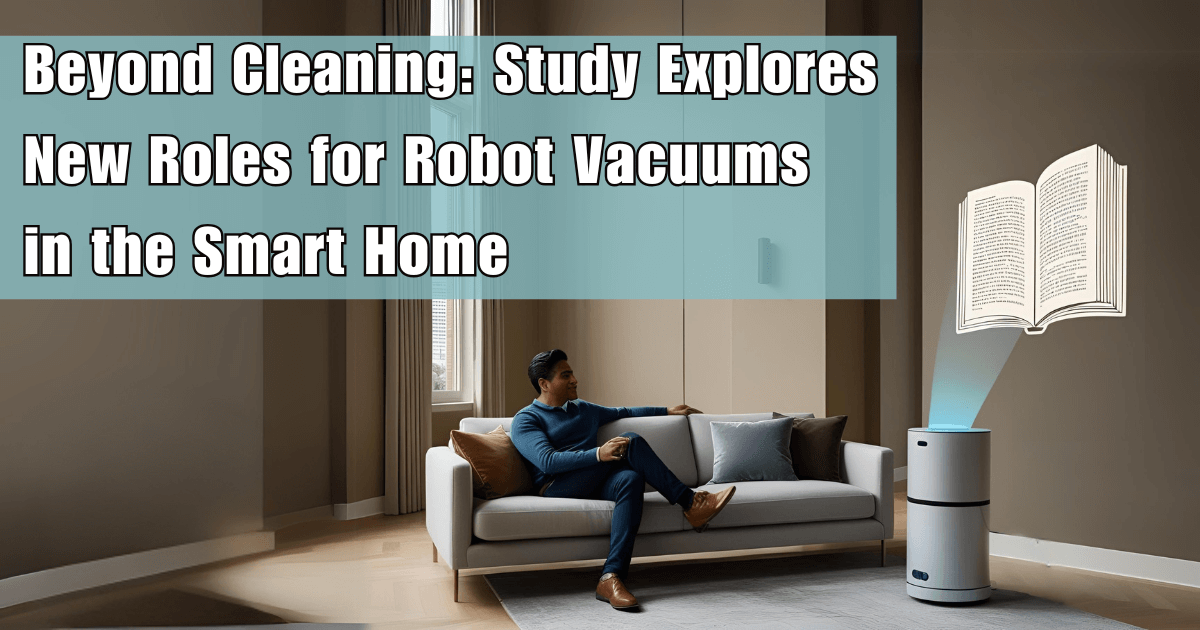Robot vacuums are already a staple of many households, quietly cleaning floors while their owners go about their day. But what if those same robots could do more—much more?
That’s the question at the heart of a new research study titled “Beyond Vacuuming: How Can We Exploit Domestic Robots’ Idle Time?”, presented at CHI 2025 by researchers from the University of Bath and the University of Calgary. The paper proposes a bold reimagining of home robots—not just as cleaners, but as mobile, multifunctional platforms that support modern lifestyles in new and surprising ways.
The Problem: Too Much Downtime
Today’s robot vacuums spend the majority of their lives docked and idle. Most models clean for under two hours a day, leaving 90% or more of their time unused. Yet these devices are packed with advanced sensors, mobility systems, and growing onboard intelligence.
The researchers saw this idle time not as a limitation, but as an opportunity. What else could these robots do when they’re not cleaning? Could they support users throughout the day in ways that go far beyond dust and debris?
“As domestic robots increasingly integrate into our daily lives, exploring their full potential becomes essential.”
from “Beyond Vacuuming: How Can We Exploit Domestic Robots’ Idle Time?”
The Method: Real Users, Real Needs
To answer these questions, the research team conducted a two-part study. First, they surveyed 50 current robot vacuum owners to learn how people use their devices, how they perceive them, and what other tasks they wish they could do. Then, they conducted in-depth interviews with 12 experts in robotics, human-computer interaction (HCI), and ubiquitous computing to explore the broader technical and societal implications.
Participants frequently mentioned how robot vacuums were already somewhat humanized—some gave them names, observed their “personalities,” and even attributed intent to their movements. But few users thought about them as anything beyond cleaners.
When asked to imagine broader uses, however, people suggested over 100 ideas. From mobile light therapy lamps to pet companions, from medication reminders to projecting recipes on the wall—users envisioned robots that could blend into daily life in meaningful ways.

The Framework: A 12-Dimension Design Space
To organize and make sense of these possibilities, the researchers created a comprehensive design framework with 12 key dimensions. These include:
- Task Type: Cleaning, caregiving, entertainment, etc.
- User Relationship: Single-person use vs. shared or family interactions
- Proximity: Close-up interaction or ambient presence
- Trigger: Manually activated, scheduled, or autonomous behavior
- Physical vs. Digital Output: From adjusting a lamp to giving verbal reminders
- Persistence: One-time actions or long-term services
The framework is designed to help product designers, engineers, and researchers map out how domestic robots can serve more diverse roles in the home.
Prototypes: From Concept to Reality
To move beyond theory, the team built four working prototypes using iRobot’s Create 3 mobile robot platform. Each prototype explored a different kind of interaction:
- ProjectorBot: A robot that projects media like workout routines or recipes onto the wall or ceiling, following the user around the house.
- LightBot: A mobile light therapy system that helps with mood regulation and sleep cycles.
- SignBot: A robot that displays signs like “Do Not Disturb” or “In a Meeting” outside a closed door.
- CareBot: A prototype for delivering pill reminders or supporting plant care by checking light and water conditions.
These proofs of concept show that multifunctional, reappropriated robots aren’t just a design dream—they’re already technically feasible.
The Implications: A New Kind of Smart Home
This research aligns with an ongoing trend: the transformation of robot vacuums into multifunctional smart home hubs. Manufacturers like Roborock, Ecovacs, and iRobot have already added cameras, microphones, object recognition, and voice control to their products. At CES 2025, Switchbot presented a multitasking robot vacuum that incorporates a smaller vacuum unit into a modular “Fusion Platform.” This platform supports various attachments that range from air purifiers and security cameras to fan or tablet holders, but as of this writing that system is yet to be released.

The next step, this research suggests, may be behavioral intelligence and multi-role interaction. Imagine a robot that reminds you to hydrate, checks if your front door is closed, plays ambient music, projects a movie on the ceiling, and still vacuums your floors—all while adapting its behavior to your routines and preferences.
There are still major challenges: privacy concerns, technical integration, user trust, and cost will all need to be addressed. But the paper offers a roadmap for where things could go.
What It Means for Consumers
For readers of Vacuum Wars, this study offers a glimpse into the near future of household robotics. While most current robots are still focused on a single purpose—cleaning—this research suggests that your next robot vacuum could also be your morning alarm, your fitness coach, or even your tutor.
As the industry evolves, the line between robot, assistant, and appliance may continue to blur. Consumers should expect smarter, more interactive, and more helpful home robots in the years ahead.
Read the full research paper here: https://dl.acm.org/doi/10.1145/3706598.3714266




